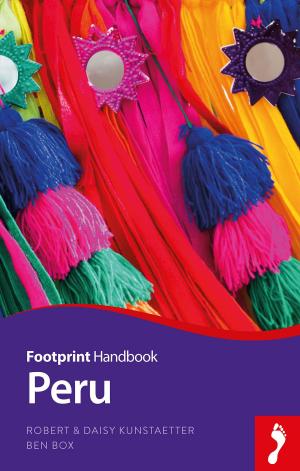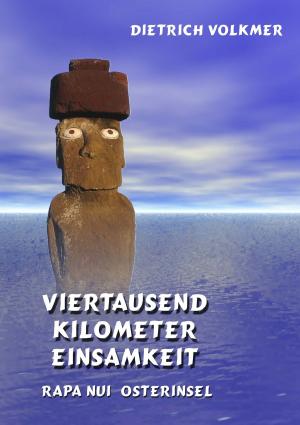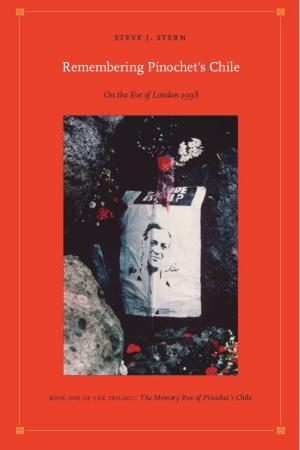| Author: | Margaret Bacon | ISBN: | 9781466172777 |
| Publisher: | Margaret Bacon | Publication: | September 1, 2011 |
| Imprint: | Smashwords Edition | Language: | English |
| Author: | Margaret Bacon |
| ISBN: | 9781466172777 |
| Publisher: | Margaret Bacon |
| Publication: | September 1, 2011 |
| Imprint: | Smashwords Edition |
| Language: | English |
When the author's husband, a civil engineer, told her they were going to Guyana. she replied: "Wonderful. I've always wanted to go to Africa", a self-critical comment she quotes to indicate how little is known about the country
She spent two years there in Georgetown on the narrow coastal trip where 750,000 lived - (while she was there), with 30,000 in the rest of the 83,000 square mile. She made many expeditions into the interior and has produced a balanced, vivid, often hilarious, account of a diverse people and a land still at a formative stage of development.
As she emphasises, the population is multi-racial. Most of the original, inhabitants, known as the Amer-indians, live in the interior. When European settlers needed labour for their sugar plantations they imported slaves from Africa.
With the abolition of slavery in 1833, the Europeans brought indentured labour from the East Indies and India itself. As free men they hoped to earn enough to return home but few did and they now form the largest single racial group. Those of them who have gone into rice growing are now among the richest men in Guyana.
Bacon sympathetically analyses the two widely dissimilar races, the Africans endearing and child-like with a slapstick sense of humour even when very poor, and the East Indians reserved and less boisterous. She also gives a refreshingly frank picture of life for the British in Georgetown, especially the women who, insufficiently occupied, devoted most of their time to gossip and grumbling at cocktail parties.
Poor, backward and with a humid climate, Guyana did not attract, she suggests, able administrators, although the country needed the services of men of exceptional quality. Sometimes they emerged by accident, like the first real cattle rancher, a Scot named Melville, who came prospecting at the end of last century and, ill with malaria, was deserted and later rescued by Amerindians and founded a powerful oligarchy.
Bacon's expeditions into the interior, while explaining the nature of the sugar, rice and bauxite industries which are the mainstay of the economy, also give her book the liveliest human passages. Exploration by river, in impossibly small and unstable craft, also hold the menace of a quick death by piranha or anaconda or, on land, an invasion of primitive quarters by legions of cockroaches.
Back in Georgetown, she wrote book reviews for a local paper which was a mass of misprints and pictures printed upside down, reflecting their attitude that "anything will do". A pompous article by a bishop concluded. "Life, my friends, is not all beer and shittles".
Margaret Bacon has illumined by sensitive observation, gentle humour and intelligent interpretation one of the world's less well known corners. The photographs, her own, enrich the feeling of exploration she so subtly sustains.
The author writes of the original Amerindians, "decimated by the first Europeans"; descendants of African slaves, whose restlessness she understands because of their history; reserved, more sophisticated East Indians; cheery West Indians, and Portuguese. She speaks of their poverty gaity, and talents.
There was Singh, the sensitive East Indian gardener who "delighted in all living things"; cheerful Myra, the maid who, presented with an egg-timer, boiled it with the eggs; Miss Macatee a suspicious lodging-house keeper modelled on an English seaside landlady on the doorstep of the jungle; the East Indian wife of a quarry owner, whose conversation "came out of Cranford" and who took the author to "wash her hands" to a box-like structure intended for more primitive purposes and (conveniently?) overhanging a precipice.
On the way to the airport to fly home, they admitted to their driver they were sad to be leaving. "Den why," he asked with true Guyanese logic, "why den you work so hard to get it finished so quick?"
When the author's husband, a civil engineer, told her they were going to Guyana. she replied: "Wonderful. I've always wanted to go to Africa", a self-critical comment she quotes to indicate how little is known about the country
She spent two years there in Georgetown on the narrow coastal trip where 750,000 lived - (while she was there), with 30,000 in the rest of the 83,000 square mile. She made many expeditions into the interior and has produced a balanced, vivid, often hilarious, account of a diverse people and a land still at a formative stage of development.
As she emphasises, the population is multi-racial. Most of the original, inhabitants, known as the Amer-indians, live in the interior. When European settlers needed labour for their sugar plantations they imported slaves from Africa.
With the abolition of slavery in 1833, the Europeans brought indentured labour from the East Indies and India itself. As free men they hoped to earn enough to return home but few did and they now form the largest single racial group. Those of them who have gone into rice growing are now among the richest men in Guyana.
Bacon sympathetically analyses the two widely dissimilar races, the Africans endearing and child-like with a slapstick sense of humour even when very poor, and the East Indians reserved and less boisterous. She also gives a refreshingly frank picture of life for the British in Georgetown, especially the women who, insufficiently occupied, devoted most of their time to gossip and grumbling at cocktail parties.
Poor, backward and with a humid climate, Guyana did not attract, she suggests, able administrators, although the country needed the services of men of exceptional quality. Sometimes they emerged by accident, like the first real cattle rancher, a Scot named Melville, who came prospecting at the end of last century and, ill with malaria, was deserted and later rescued by Amerindians and founded a powerful oligarchy.
Bacon's expeditions into the interior, while explaining the nature of the sugar, rice and bauxite industries which are the mainstay of the economy, also give her book the liveliest human passages. Exploration by river, in impossibly small and unstable craft, also hold the menace of a quick death by piranha or anaconda or, on land, an invasion of primitive quarters by legions of cockroaches.
Back in Georgetown, she wrote book reviews for a local paper which was a mass of misprints and pictures printed upside down, reflecting their attitude that "anything will do". A pompous article by a bishop concluded. "Life, my friends, is not all beer and shittles".
Margaret Bacon has illumined by sensitive observation, gentle humour and intelligent interpretation one of the world's less well known corners. The photographs, her own, enrich the feeling of exploration she so subtly sustains.
The author writes of the original Amerindians, "decimated by the first Europeans"; descendants of African slaves, whose restlessness she understands because of their history; reserved, more sophisticated East Indians; cheery West Indians, and Portuguese. She speaks of their poverty gaity, and talents.
There was Singh, the sensitive East Indian gardener who "delighted in all living things"; cheerful Myra, the maid who, presented with an egg-timer, boiled it with the eggs; Miss Macatee a suspicious lodging-house keeper modelled on an English seaside landlady on the doorstep of the jungle; the East Indian wife of a quarry owner, whose conversation "came out of Cranford" and who took the author to "wash her hands" to a box-like structure intended for more primitive purposes and (conveniently?) overhanging a precipice.
On the way to the airport to fly home, they admitted to their driver they were sad to be leaving. "Den why," he asked with true Guyanese logic, "why den you work so hard to get it finished so quick?"















